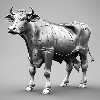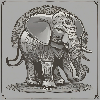The pagan history of hot cross buns can be traced back to pre-Christian England, where Saxons marked breads with a cross as a symbol of the four seasons and offered them to the goddess of spring. Later, Christian missionaries associated the cross with the crucifixion of Jesus, and the bun became a traditional Easter food.

5 answers
 Dario
Sat Nov 09 2024
Dario
Sat Nov 09 2024
This festival was a time of great significance, as it symbolized the renewal of life and the promise of growth after the barren months.
 CharmedClouds
Sat Nov 09 2024
CharmedClouds
Sat Nov 09 2024
Pagans held a deep reverence for Eostre, the deity associated with the dawn and the bloom of spring.
 Martina
Sat Nov 09 2024
Martina
Sat Nov 09 2024
With the advent of spring, the pagans embarked on a month-long celebration, marking the pivotal transition from the icy grip of winter to the rejuvenating embrace of spring.
 JejuSunrise
Fri Nov 08 2024
JejuSunrise
Fri Nov 08 2024
During the festivities, Saxons engaged in a special tradition of baking buns. These buns were adorned with a cross, a symbol that represented the four distinct phases of the moon.
 Giuseppe
Fri Nov 08 2024
Giuseppe
Fri Nov 08 2024
The Saxons offered these moon-crossed buns to Eostre as a token of their gratitude and devotion. It was a ritual that underscored their connection to the celestial cycles and the natural world.

